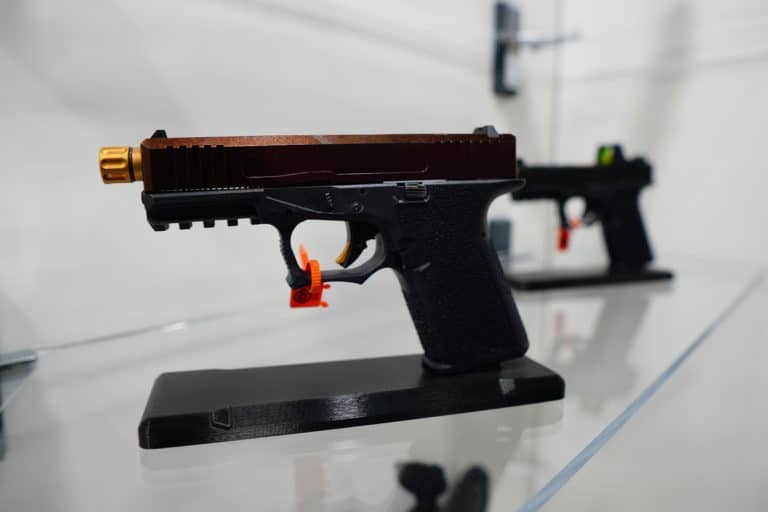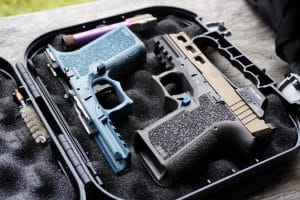The ATF’s attempt to redefine what counts as a firearm has been vacated.
On Friday, Federal District Court Judge Reed O’Connor ruled in favor of the gun companies and gun-rights groups challenging the ban. He found the ATF exceeded its authority when it decided to treat unfinished firearms parts, often used to build homemade guns President Joe Biden called “ghost guns” due to their lack of serial numbers, the same way as completed and functional firearms.
“This case presents the question of whether the federal government may lawfully regulate partially manufactured firearm components, related firearm products, and other tools and materials in keeping with the Gun Control Act of 1968,” Judge O’Connor wrote in Vanderstok v. Garland. “Because the Court concludes that the government cannot regulate those items without violating federal law, the Court holds that the government’s recently enacted Final Rule… is unlawful agency action taken in excess of the ATF’s statutory jurisdiction. On this basis, the Court vacates the Final Rule.”
The ruling is another loss for President Joe Biden’s gun agenda. It comes after several federal appeals courts have struck down the bump stock ban, which was instituted by former President Donald Trump but defended by Biden’s administration. It also casts a further legal shadow over Biden’s other ATF rule banning unregistered pistol-brace-equipped guns, which has seen enforcement forestalled by multiple federal courts and is awaiting a ruling on the merits.
Judge O’Connor’s decision was not based on Second Amendment claims. Instead, it was based around whether the ATF had the authority under the Administrative Procedures Act to reinterpret the way it enforces federal gun laws to regulate unfinished parts and whether that reinterpretation fit with the law’s language. On both fronts, he determined it did not.
“[T]he definition of “firearm” in the Gun Control Act does not cover all firearm parts. It covers specifically ‘the frame or receiver of any such weapon’ that Congress defined as a firearm,” he wrote. “And that which may become or may be converted to a functional receiver is not itself a receiver. Congress could have included firearm parts that ‘may readily be converted’ to frames or receivers, as it did with ‘weapons’ that ‘may readily be converted’ to fire a projectile. But it omitted that language when talking about frames and receivers.”
The ruling against the ATF’s ban will allow manufacturers to begin selling the unfinished parts again, even in kits alongside other tools.
“Congress’s definition does not cover weapon parts, or aggregations of weapon parts, regardless of whether the parts may be readily assembled into something that may fire a projectile,” Judge O’Connor, a George W. Bush appointee, wrote. “To read § 921(a)(3)(A) as authorizing ATF to regulate any aggregation of weapon parts that may readily be converted into a weapon would render § 921(a)(3)(B) ‘s carveout for “frame[s] or receiver[s]” superfluous. Accepting Defendants’ interpretation would be to read the statute as authorizing regulation of (A) weapon parts generally, and (B) two specific weapon parts.”
Gun-rights advocates celebrated the ruling. The Second Amendment Foundation, a plaintiff in the case, called it “another court blow to Joe Biden’s anti-gun agenda.”
“This case is one more example of the Biden administration’s ongoing effort to exceed its authority in an effort to place as many restrictions as possible on the rights of law-abiding gun owners,” Adam Kraut, the group’s executive director, said in a statement.
The Firearms Policy Coalition, another plaintiff, said it was “thrilled to see the Court agree that ATF’s Frame or Receiver Rule exceeds the agency’s congressionally limited authority.”
“With this decision, the Court has properly struck down ATF’s Rule and ensured that it cannot enforce that which it never had the authority to publish in the first place,” Cody J. Wisniewski, the group’s counsel in the case, said in a press release.
Ultimately, Judge O’Connor said the case came down to a simple conclusion.
“Because the Final Rule purports to regulate both firearm components that are not yet a ‘frame or receiver’ and aggregations of weapon parts not otherwise subject to its statutory authority, the Court holds that the ATF has acted in excess of its statutory jurisdiction by promulgating it,” he ruled.






